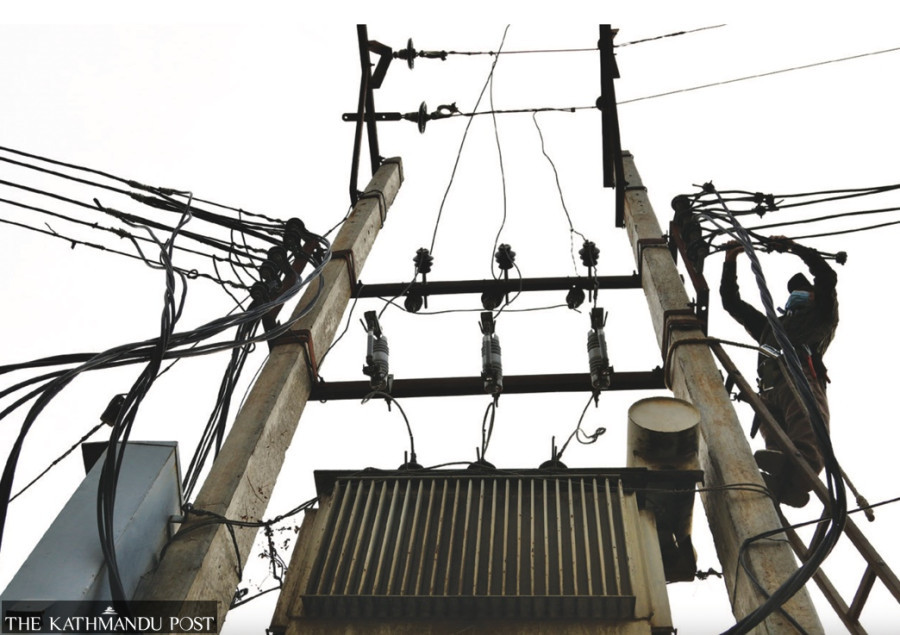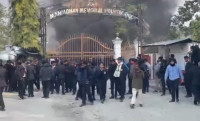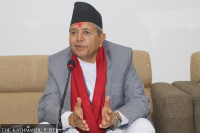National
Rising electrocution deaths blamed on Nepal Electricity Authority’s negligence
In Madhesh alone, 449 people have died from electric shocks over the past five years.
Binod Ghimire
A teenager from Bajpani in Sigas Rural Municipality, Baitadi, died of electrocution on Friday morning.
Basanta Bohara, 13, lost his life on the spot when he climbed a tree that had come into contact with a live wire from a broken power line. The locals, outraged by the incident, obstructed the highway, blaming the negligence of the Nepal Electricity Authority (NEA) for the death.
“The protest was called off after the local NEA office agreed to pay Rs150,000 in compensation and Rs500,000 in insurance. It has also agreed to provide a job to a member of the deceased’s family,” Inspector Balaram Pandey, spokesperson for the District Police Baitadi, told the Post.
Bohara’s case is an example of how poorly managed electrical infrastructure is putting lives at risk.
In March, three people of a family died of electrocution in ward 3 of Masuriya of Rapti Municipality in Dang. Local resident Dila KC, 47, and her five-year-old grandson were killed on the spot after being electrocuted by a broken electric wire. Dila’s 68-year-old husband Gorakh Bahadur succumbed to injuries while undergoing treatment at a hospital in Butwal.
The NEA had said strong winds had damaged the power line, resulting in the incident. However, the locals blamed the authority’s failure to fix the wires on time for the fatal accident.
There was a similar tragedy in Ram Mahato’s house in ward 9 of Ishwarpur Municipality in Sarlahi district on May 10. An internet wire tied to an electricity pole in front of his house was hanging low. Ram hurried to help a boy in his neighbourhood after he got trapped on the wire and fell down. Ram got an electric shock as he pulled the wire by the side.
His wife Kusum rushed to the site on seeing her husband lying on the ground. Kusum somehow removed him from the live wire, but she received electric shock in the process and died on the spot, while Ram was left seriously injured.
Data from the authority itself shows that the expansion of electricity coverage also has claimed lives of innocent people. For instance, a total of 449 people died of electric shock in Madhesh Province over the past five years, as per the records from the NEA provincial office in Janakpur.
The National Human Rights Commission, following the reports of rampant deaths of common people, has started investigating the matter. Officials at the commission say hundreds of people die every year from electrocution, many due to NEA’s mismanagement. “The NEA must provide its service responsibly. There is no excuse for the loss of human lives,” Tika Ram Pokharel, spokesperson at the commission, told the Post. “Given the authority’s growing profits, it must allocate a portion of those funds towards safety measures.”
According to its annual report, the NEA’s net profit before tax stood at Rs13.307 billion in the previous fiscal year, up from Rs12.077 billion in the fiscal year 2022-23.
However, officials at the authority say they are serious about ensuring safety while expanding the electricity coverage. Chandan Kumar Ghosh, spokesperson at the NEA, said they are readily available to fix the wire breakage or other such technical issues whenever they get information.
He said, on several instances, haphazard road expansion and digging in the areas where electricity poles are erected, make the poles collapse, causing electrocution. “Safety is our utmost priority. Yet, there have been incidents of electrocution, but the NEA cannot solely be blamed in many of these cases,” Ghosh told the Post. “While paying attention to proper management of wires, raising public awareness is as important.”
There is a regulation in place to guide compensation for loss of human and animal lives, along with property damage. Ghosh added that the law has been amended over time in light of the evolving circumstances.




 9.12°C Kathmandu
9.12°C Kathmandu















